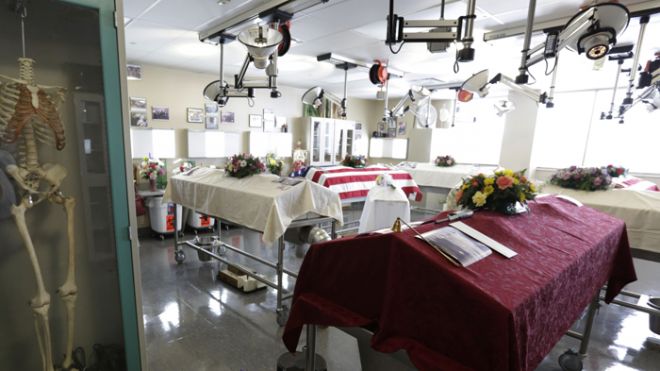My choice to study biomedical engineering was informed by a course listed in the third year of study: “ANAT2020 – Anatomy.” It is the same anatomy course taken by the medical students, a comprehensive study of histology (the microscopic study of tissues), embryology and, of course, morphological or gross anatomy; the study of the macroscopic structures of the human body. All areas of study interesting in their own right, what really piqued my interest was the practical side of the course: cadaver dissection.
 “She lived for others but died for us.”
“She lived for others but died for us.”
To my 18-year-old mind, cadaver dissection seemed like something “cool,” how many people get to dissect humans, after all? I wasn’t quite prepared for the way the medical school draped the whole process in an air of somber nobility. First there was a swearing-in ceremony, where the anatomy students had to pledge an oath to treat the cadavers with the same respect one would have for a living person. Then we had to sign a register which was a legally binding document, as part of the South African human tissues legislation. Essentially, we were not allowed to photograph any specimens and we obviously couldn’t take any tissues (except for bones to study) out of the dissection hall.
I didn’t know this ceremony would take place in the dissection hall itself, the cadavers already splayed out in ten by eight rows of gurneys, wrapped in formalin-soaked cloth and covered with plastic – they looked a lot like mummies. And so we sat in the hall for about an hour, listening to speeches from several members of staff. The hall was two floors underground; there were no windows and there was poor ventilation. It did not make for a very good first impression: to be packed into a hot, stuffy hall with around 80 dead bodies reeking strongly of formalin.
 Cadaver memorial service at Indiana University
Cadaver memorial service at Indiana University
It was, however, an interesting visual. The cadavers were all covered but one could still discern shapes: some were fat, some were short, many had their legs partially flexed in a deathly rigidity – I would later learn that the embalming process could prolong rigor mortis. Their being covered only contributed to the mystery which, since a child, I have found compelling – what happens after death? I was, for the most part, fine with the smell and the heat and, well, the corpses. I had framed it all in a comfortably detached academic setting. It was only when the dean of the medical school turned the corpses back into humans that I felt a dizziness descend upon me, an existential unrest.
“Don’t forget,” he said, “they were walking the streets of Johannesburg, just a few weeks ago.” I scanned my eyes across the rows of bodies and suddenly they became animated — I could see the fat ones enjoying a meal, the small ones as little old ladies shuffling about. They had intent, desires, fears, hopes…and now they were here. They were here and about to be subjected to all manner of terrible acts, all their corporeal secrets were to be revealed to a troop of marauding students and there was not a thing they could do about it. In their death they had relinquished all control and were at our mercy. My mercy. I was not prepared for what I could now see was a type of twisted power.
 Dissection at University of Alaska Anchorage
Dissection at University of Alaska Anchorage
This is perhaps the crux. I, above all else, value my autonomy and now with no subtlety or charm I saw death as the ultimate contradiction to and enemy of autonomy. With one sentence the Dean had disturbed a long stagnant pool of fears. The ceremony ended and all the students began to chatter – but by then it was all white noise to me and for some haunting, terrible reason a song played in my mind: this song. Accuse me of melodrama, but it is the truth and here I am striving for candor. I drove home in a state of anxiety and had to keep reminding myself that I had learnt nothing new that day; I always knew I was mortal, that I would die, that I was just a hunk of meat – walking around one day and wrapped up on a gurney the next; waiting to be picked apart by lab-coat wearing vultures. But this did nothing to calm me; it would be a relatively long time until I truly came to grips with mortality and seeing humans as objects, through a series of enlightening, often gruesome and sometimes unbearable set of dissections.
